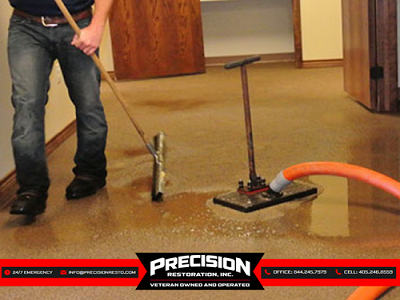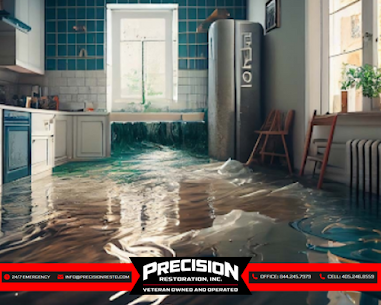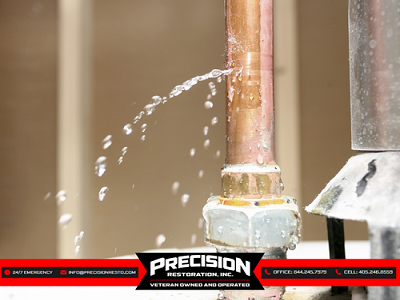Water damage is more than just a nuisance; it’s a silent threat lurking in homes and buildings, often unnoticed until it’s too late. From leaky pipes to severe flooding, the consequences of water damage extend far beyond visible stains and dampness. In this article, we delve into the hidden dangers of water damage that homeowners and property managers need to be aware of.While it’s easy to spot standing water or a soaked carpet, the true extent of water damage often lies beneath the surface. Mold growth, structural weakening, and electrical hazards are just a few of the potential dangers that can arise from untreated water damage. Additionally, prolonged exposure to moisture can compromise the integrity of building materials, leading to costly repairs and health risks for occupants. Join us as we uncover the hidden dangers of water damage, exploring its impacts on health, property, and overall well-being. Understanding these risks is the first step towards prevention and mitigation, ensuring a safer and healthier environment for all.
Invisible Threats: Health Risks Associated with Water Damage

Water damage isn’t just a problem for your property’s structure; it can also pose serious health risks to you and your loved ones. While the visible signs of water damage may be addressed, the invisible threats lingering in the aftermath often go unnoticed. In this article, we’ll delve into the health hazards associated with water damage, shedding light on the unseen dangers that can compromise your well-being long after the water has been removed.
Respiratory Issues
One of the most prevalent health risks linked to water damage is respiratory problems. When water infiltrates building materials, such as drywall and carpeting, it creates a damp environment ideal for mold and mildew growth. Mold spores released into the air can trigger allergies, asthma attacks, and respiratory infections, particularly in individuals with weakened immune systems.
Allergic Reactions
Exposure to mold, bacteria, and other contaminants thriving in water-damaged areas can lead to allergic reactions. Symptoms may include sneezing, coughing, itchy eyes, and skin irritation. For individuals sensitive to certain allergens, prolonged exposure to indoor air pollutants resulting from water damage can exacerbate existing allergic conditions.
Asthma Aggravation
For asthma sufferers, water damage can exacerbate symptoms and trigger asthma attacks. Mold spores, dust mites, and other allergens released into the air can irritate the airways, leading to wheezing, chest tightness, and difficulty breathing. Prompt remediation of water damage is crucial to mitigate the risk of asthma aggravation and improve indoor air quality.
Toxic Mold Exposure
Certain types of mold, such as Stachybotrys chartarum (commonly known as black mold), produce mycotoxins that can be harmful to human health. Inhalation or ingestion of these mycotoxins can cause a range of symptoms, including headaches, fatigue, nausea, and respiratory issues. Prolonged exposure to toxic mold can lead to more severe health complications, highlighting the importance of thorough mold remediation in water-damaged spaces.
Bacterial Contamination
Water damage can introduce harmful bacteria, viruses, and other pathogens into your living environment. Contaminated water from floods or sewage backups can harbor bacteria such as E. coli and Salmonella, posing significant health risks if ingested or inhaled. Proper sanitation and disinfection are essential to eliminate bacterial contamination and prevent the spread of waterborne illnesses.
Protecting Your Investment: Insurance Insights on Water Damage
Water damage can wreak havoc on your property and finances, making comprehensive insurance coverage essential for protecting your investment. In this article, we’ll explore key insights into insurance coverage for water damage, helping you understand your policy’s provisions and ensure adequate protection against unforeseen losses.
- Review Your Policy: Familiarize yourself with your insurance policy’s coverage limits, exclusions, and deductibles related to water damage. Understanding the terms of your policy empowers you to make informed decisions and avoid surprises in the event of a claim.
- Types of Water Damage: Different insurance policies may cover water damage caused by various sources, such as burst pipes, plumbing leaks, appliance malfunctions, or natural disasters like floods. Ensure your policy provides sufficient coverage for potential water damage scenarios relevant to your property.
- Flood Insurance: Standard homeowners’ insurance typically does not cover flood damage caused by rising water from external sources, such as overflowing rivers or storm surges. Consider purchasing a separate flood insurance policy to protect your property against flood-related losses.
- Water Damage Exclusions: Insurance policies often exclude coverage for certain types of water damage, such as gradual leaks, seepage, or maintenance-related issues. Take proactive measures to prevent excluded water damage risks and minimize your vulnerability to uninsured losses.
Water damage can have significant financial implications for property owners, underscoring the importance of adequate insurance coverage.
Prevention is Key: Strategies to Safeguard Against Water Damage
Water damage can wreak havoc on your property, leading to costly repairs, structural issues, and health hazards. However, by implementing proactive measures, you can significantly reduce the risk of water damage and protect your investment. In this article, we’ll explore eight essential strategies to safeguard your home or business against water damage, emphasizing the importance of prevention as the first line of defense.
Regular Maintenance Inspections
Schedule regular inspections of your property to identify potential water damage risks before they escalate. Check for signs of leaks, cracks, or deteriorating seals in plumbing fixtures, appliances, and roofing. Addressing minor issues promptly can prevent them from developing into major water damage incidents.
Maintain Proper Drainage
Ensure that your property’s drainage systems, including gutters, downspouts, and French drains, are clear of debris and functioning effectively. Proper drainage redirects rainwater away from your home or building, reducing the risk of water infiltration and foundation damage during heavy rainfall or storms.
Seal Windows and Doors
Inspect the seals around windows and doors for signs of wear and deterioration. Properly sealed windows and doors prevent water intrusion during inclement weather, reducing the likelihood of moisture seeping into your property and causing damage to interior surfaces and furnishings.

Install a Sump Pump
Consider installing a sump pump in your basement or crawl space to prevent groundwater infiltration and mitigate the risk of flooding. A sump pump automatically removes excess water from below-grade areas, helping to keep your property dry and minimizing the potential for water damage.
Upgrade Plumbing Fixtures
Replace aging or faulty plumbing fixtures, such as faucets, supply lines, and water heaters, with newer, more efficient models. Modern plumbing fixtures are designed to minimize water waste and reduce the risk of leaks and water damage. Investing in upgrades can save you money in the long run by preventing costly repairs and water loss.
Conclusion
Precision Restoration, Inc. sheds light on the often overlooked hazards of water damage, emphasizing the critical need for prompt mitigation and restoration measures. Through our expertise in Oklahoma City, Oklahoma, we’ve witnessed firsthand the devastating consequences of untreated water damage, ranging from structural decay to health risks posed by mold growth. With our diligent approach and specialized services, we aim to empower homeowners and businesses alike to address water damage swiftly, safeguarding their properties and well-being for the long term.



